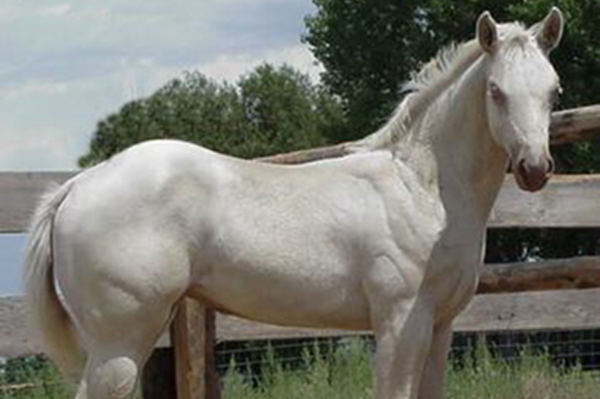
The champagne gene is a rather recent discovery in the world of horse color and it has a diluting effect on both chestnut and black base coats. This pigment alteration can exhibit in a showy display of colors which often have an almost metallic sheen.
Champagne Dilution
This is another dilution that lightens the base color of an animal, turning red pigment to a golden yellow in color and black pigment to anything from grey to chocolate brown. Champagne animals can be incorrectly mistaken for silver dapples, palominos, blue roans and even appaloosas. However there are a few traits exclusive to the champagne dilution that make them fairly easy to distinguish.
Champagne Characteristics
There are a few characteristics that can only be found in animals affected by champagne, which makes it one of the few dilutions that can be visually identified with a reasonable degree of accuracy. Animals affected by this gene are born dark and tend to grow lighter with age.
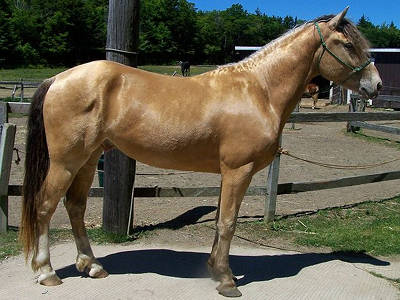
Perhaps the most sought after characteristic of this dilution is an amazing shiny metallic coat. Not all affected by the gene will display the sheen, and it’s not really understood why genetically. Interestingly enough, this can make the animals rather difficult to photograph.

Champagne skin is pink in color, but not like other light skinned horses. Sometimes called pumpkin skin, it’s light when they are born and tends to grow darker as they age. They will also develop darker freckles around their mucus membranes.
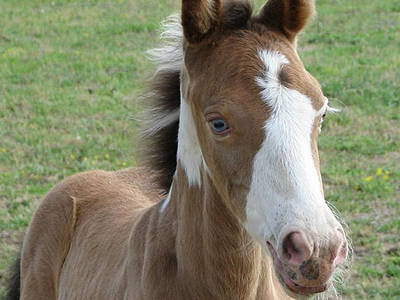
This dilution also affects the eyes, which is another easy way to determine the gene. Unlike the dark brown eyes of most light animals, champagnes are often born with soft blue eyes that darken as they become green and change again to become a golden amber or hazel color.
Not all horses with a metallic sheen are champagne – Akhal-Teke animals often display a glowing coat and champagne doesn’t run in the breed.
Champagne Shades
The champagne gene affects black, chestnut & bay animals to varying degrees. Any of them can carry a metallic sheen and reverse dappling in their coat.
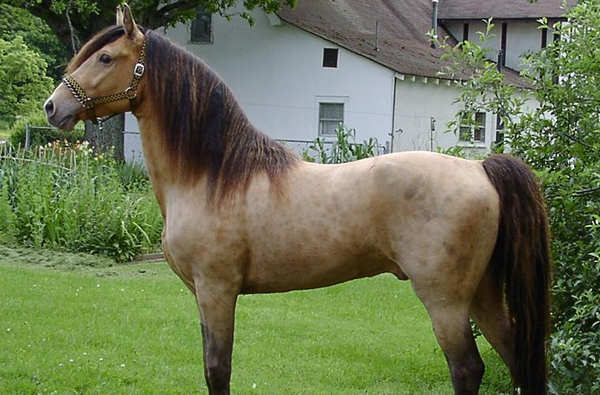
Classic Champagne
Often mistaken for a grullo and (incorrectly) called lilac dun, classic is a black base diluted by champagne gene. The gene has a rather dramatic effect on the body, turning it golden yellow to light chocolate brown and turning the mane, tail and points a deep brown color.
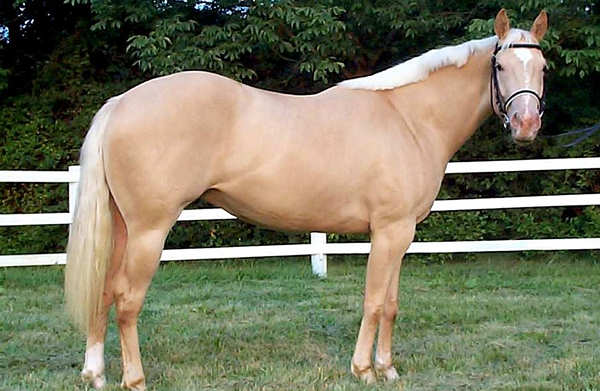
Gold Champagne
Champagne on a chestnut base creates an animal often mistaken for a palomino. The dilution lightens body hair to a golden color that varies from light to a deeper gold and often turns mane and tail flaxen.

Amber Champagne
On a bay base this dilution doesn’t have a dramatic effect, and the result is commonly mistaken for buckskin. Body color is lightened to a golden yellow color and mane, tail and points to a chocolate brown.
Sable Champagne
On a seal brown base, the champagne has a lesser effect than bays and even some black bases. The coat is lightened to various shades of chocolate brown with mane, tail and points remaining dark. This makes it rather more difficult to distinguish their characteristic reddening of soft patches. Unfortunately there are no images in the public domain for a sable champagne, however you can learn more and see images of them on the Champagne registry website.
Learn More About the Champagne Dilution
Be sure to check out a guest post with a more complex look at the champagne gene: Equine Champagne Gene
